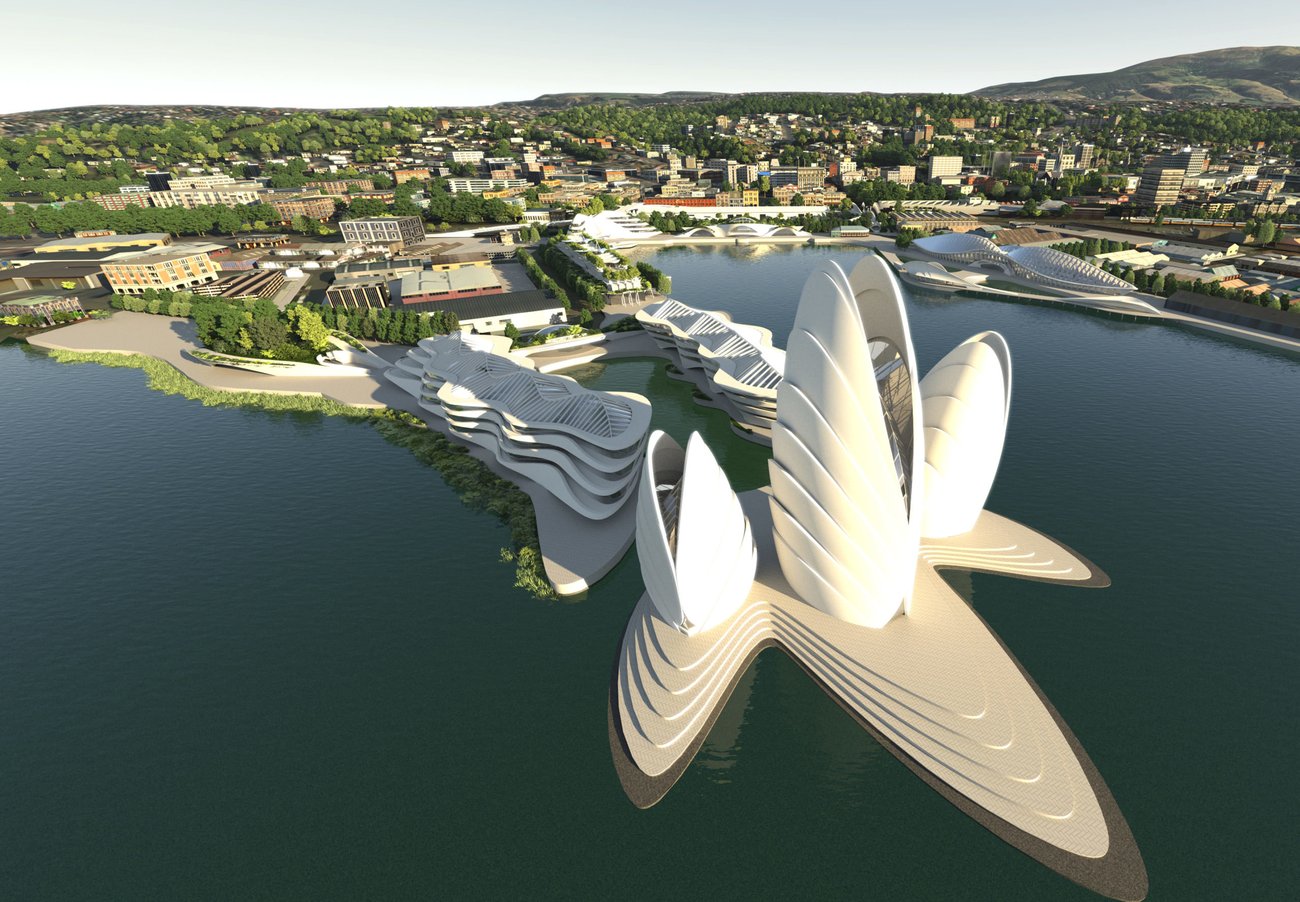
It’s a harbour design that would rival Sydney’s – and even bears a little bit of resemblance to it, with a unique New Zealand twist.
The proposed redesign of Steamer Basin was created by Dunedin-based architect Damien van Brandenburg of Architecture van Brandenburg and envisages what the town’s waterfront could look like within 30 years.
The ambitious vision was worked on for months by van Brandenburg when submissions were being taken on a new bridge for the city, with Animation Research also volunteering time to create the video of the project.

“What happened was there was a project for building the bridge that would link the town and the harbour, so I went Damien’s place to see if we could create a 3D model of the whole thing,” Animation Research’s founder and CEO Ian Taylor said. “I went and looked at it and the bridge was spectacular. I said, ‘Yes we could build that Damien, but it’s a lot of money and it’s a bridge to nowhere’.
“Damien said, ‘I have an idea for that as well’. He took out these models he’d designed and placed them all around with a smile on his face and my reaction was, ‘this is not a bridge to the harbour basin, it’s a bridge to the future’. So, we’ve been working on new models, videos, we discussed it with the council, port authority, university, iwi – everyone privately quietly had input – and then we launched. The response was incredible.”
Like the Sydney Opera house, the harbour basin design has strong references to its natural surroundings, but with a unique New Zealand take.
The cultural centre is shaped like shells in reference to the bountiful seafood in the harbour, while the research centre and possible public aquarium is shaped like a whale’s tail.
The design also features an ecotourism office, a hotel, an office and apartment area, stores, a cafe, apartment and exhibition spaces and an art gallery and cultural centre, with space for new public spaces, cycleways and walkways.

The design is also future proofed for global warming, with the entire site modelled for tidal rise predictions right through to 2090, while solar panels were included within the bridge design to provide a natural energy resource.
It could also help with managing cold weather in the deep South, with buildings and trees that could help filter out the wind from the basin.
The future-thinking design put forward has been embraced by both stakeholders and the public, with Port Otago, the University of Otago and Ngai Tahu getting behind the plans.
Port Otago was looking into shift its remaining operations within Steamer Basin elsewhere to remove any potential blockades to the project.
Taylor says there was a unanimous vote by the council before Christmas to allocate a $24 million budget to begin building the bridge, which would be the key to kickstarting the project.
Meanwhile, an exhibition was held in Dunedin Library over the summer called ‘What if?’ which allowed the public to weigh in on what should be funded, ask questions related to it, and also submit their own ideas.
Taylor said based off the experiment, public support for the project was around 92 to 94 percent.
In fact, he said he had even been stopped in the supermarket in Queenstown and Wanaka over the break by people telling him to hurry up and get the design underway.
The 30-year timeline was decided on in order to not panic people, Taylor says, but it could realistically happen in a shorter timeline if the bridge gets underway soon.

“We’re trying to be inclusive of everybody locally with this development. As we get it running, the first developers that will have opportunities down here will be those that have invested in the restoration of buildings in Dunedin like Vogel St.
“It’s also not to be set up in a way that it takes people from other parts of the city, shifts them out and creates empty buildings, it’s about growing rather than shifting them around. It’s a community-led idea.”
He says credit should be given to Damien van Brandenburg, whose vision and time helped shaped the idea.
“The work he’s put into it… if it was done by consultants it would cost $250,000. But he’s done it [pro-bono] because he’s passionate about the area.”
For now, whether the design will get underway a waiting game, as options for the bridge will be made part of a consultation document and circulated for community feedback in March or April.
“Everybody’s starting to get back on deck in Dunedin now,” Taylor says. “There are things I can’t discuss at the moment that will drop into place quite fast which could mean in a couple of months, we could start moving on it quite quickly.”





